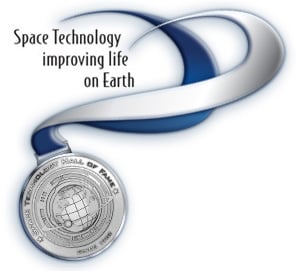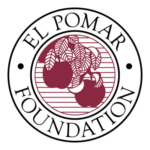Space Technology Hall of Fame
Air Purification and Plant Growth Innovations are Space Technology Hall of Fame Inductees
Written by: developer
The Space Foundation's 33rd Space Symposium will culminate on April 6 with ceremonies celebrating the induction into the Space Technology Hall of Fame® of two innovations developed for space that now improve life on Earth, as well as celebrating 30 years of the Space Technology Hall of Fame program.
 The 2017 inductees are:
The 2017 inductees are:
- Radiant Catalytic Ionization (RCI), enhanced technology creating hydroxyls through photocatalytic oxidation technology
- Staged Nutrient Release (SNR) Fertilizer, precise timed released polymer coated fertilizer granules that reduce fertilization applications and environmental damage
About the Space Technology Hall of Fame
Thirty years ago, the Space Foundation's Space Technology Hall of Fame was established to increase public awareness of the benefits that result from space exploration programs and to encourage further innovation. To date, 75 technologies have been inducted that were transformed into commercial products that improve the quality of life for all humanity.
About ActivePure Radiant Catalytic Ionization (RCI) Technology
In the mid-1990s, scientists at a NASA Research Partnership Center in Wisconsin were working on improving methods of growing plants in space.
The work was accomplished by the NASA-funded Wisconsin Center for Space Automation and Robotics -- or WCSAR -- one of many universities or research centers partnering with industry to work on NASA directed research programs.
The problem was the build-up of ethylene gas around plants grown in the closed environment of spacecraft, which caused premature plant decay and spoilage.
To combat this, the group developed an 'ethylene scrubber' based on a concept by Dr. Marc Anderson using the existing principle of photocatalytic oxidation where UV lighting and titanium dioxide are used to break down organic compounds like ethylene.
The WCSAR team worked to create a system that could function in the space environment -- no simple task. The first device was successfully flown and operated on Space Shuttle Columbia in 1995, proving the system could work in helping to grow plants in the space environment. The initial results were successful and further refinements were made to the system.
NASA Marshall Space Flight Center’s Space Product Development Program funded and provided assistance to WCSAR as the worked to develop the plant growth chambers for space flight. The ethylene scrubbers that were conceived and developed for this project are the basis for the Aerus’ air purifiers in use today.
The ActivePure family of products was designed around the concept that was proven by the NASA-funded team. While there are similar products, the Aerus team took the concept of the space-based ethylene scrubber and further developed the technology to build a family of products that benefit people in their everyday life.
About Florikan's Staged Nutrient Release (SNR) Fertilizer
Florikan® CEO Ed Rosenthal noticed one of his client's struggle to get Florikan fertilizer to mix into a water solution for easier application. This inspired Rosenthal to develop a new method, allowing easier and more accurate fertilizer application.
In 2003, Florikan introduced its first Staged Nutrient Release (SNR) fertilizer. Three polymers were developed to coat three components of the fertilizer. This concept, patented in 2004, proved to be very successful for the growers.
Growers could more accurately apply and use less fertilizer because the staged release kept nutrients in the soil longer, resulting in increased crop yields and significantly less environmental damage from excess fertilizer leaching into groundwater, a critical problem in the agricultural industry.
The National Society of Professional Engineers selected the technology for its 2004 'Most Innovative New Product' award, and afforded Florikan 40 hours of consulting research and technical advice.
Florikan also engaged the NASA-funded Space Alliance Technology Outreach Program -- or SATOP -- designed to help small businesses overcome technological challenges using expertise derived from the U.S. space program. The original SATOP concept began in Florida, with initial funding and support provided by NASA’s Kennedy Space Center. The alliance partners that supported the SATOP program included Kennedy staff and local aerospace and technology companies. Florikan continues to work with Kennedy today in developing fertilizers to support NASA’s research into long-term space flight.
SATOP Engineers analyzed the high production cost issues that limited Florikan's widespread use. They determined Florikan could coat all three fertilizer components with the same material -- a single polyurethane material that NASA has used in past projects. Florikan developed a new staged release fertilizer using this single coating, and in 2006 patented this new technology ensuring its commercial success.
In 2012, the J.R. Simplot Company purchased the rights to Florikan's technology. Simplot's worldwide distribution channel will provide more growers access to the product and its many benefits.
2017 Individual Inductees
The following individuals are being inducted into the Space Technology Hall of Fame®.
For ActivePure RCI:
- Joseph Urso
- Andrew Eide
- Dr. Marc Anderson
For Florikan's SNR Fertilizer:
- Ed Rosenthal
2017 Organizational Inductees
The following organizations are being inducted into the Space Technology Hall of Fame®.
For ActivePure RCI:
- Aerus
- NASA Marshall Space Flight Center
For Florikan's SNR Fertilizer:
- Florikan E.S.A., LLC
- NASA Kennedy Space Center
- Space Alliance Technology Outreach Program (SATOP)
Organizational Commendation: J.R. Simplot Company
About the Judges
The distinguished panel of judges who selected the 2017 Space Technology Hall of Fame® inductees comprised:
- Alice Bunn, Ph.D., Director of Policy, UK Space Agency
- Gwang-Rae Cho, Ph.D., President, Korean Aerospace Research Institute
- Ioana Cozmuta, Ph.D., Industry Innovation & Microgravity Lead, NASA Ames Research Center
- Sarah Cruddas, Space Journalist & Science Broadcaster
- Birgit Hartman, Cost Auditor, European Space Agency
- Sylvain Laporte, President, Canadian Space Agency
- Richard Lewis, Movie Producer (The Space Between Us), Southpaw Entertainment
- Col. Paul Lockhart, USAF (Ret.) Former NASA Astronaut/Sr. Advisor, PEMDAS Technologies & Innovations
- Allan H. Lockheed, Jr., Partner, The Resource Group
- Ger Nieuwpoort, Ph.D., Director, Netherlands Space Office
- Namira Salim, Founder & Chairperson, Space Trust
Nominate Technologies for 2018 Space Technology Hall of Fame
The deadline to submit nominations for induction in 2018 will be Aug. 15, 2017. Anyone may submit a nomination of a technology that was developed anywhere in the world for use in space and then modified or adopted for use on Earth. Nomination information, including online and downloadable nomination forms, is available at www.spacefoundation.org/nominate-a-technology.
This article is part of Space Watch: March 2017 (Volume: 16, Issue: 3).


